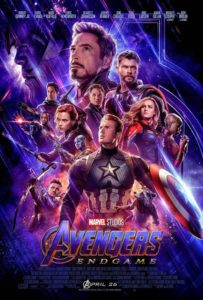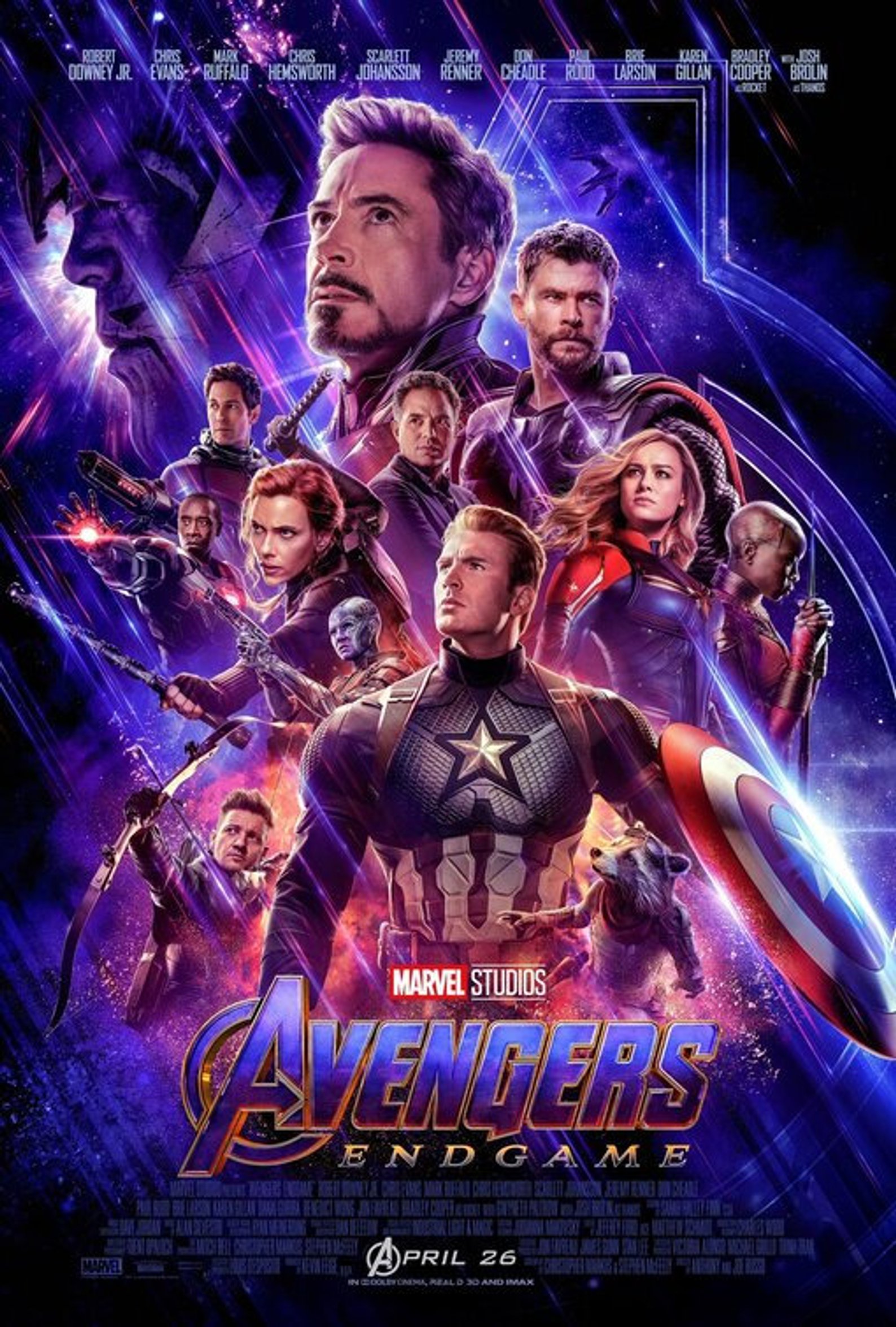The Smithsonian calls it a “reimagination of the movie-theater experience.” Its Arbus IMAX Theater at the Udvar-Hazy Air and Space Museum is one of only four theaters in the United States and the only one on the East coast to feature a stunning new leap forward in the technology of projecting a film onto the screen. I had a chance to see it up close and personal when I went to see “Avengers: Age of Ultron” a second time in four days so that I could enjoy it again without having to take notes and also to check out this new toy. I can report that it is well worth the trip, with unprecedented brightness, focus, and clarity, even with 3D glasses on.
I spoke to engineer Brian Bonnick about what the new projection system is and how it is different from some of the mechanics that have been at the literal center of projection since the Edison days.
Give me your description of what films look like through this new system.
It looks awesome. I guess the way we would put it is – this new laser technology that we developed I think, completely revamps the movie-going experience. We started this development well over two years ago and our intention initially was to find a solution to replace film based projection systems because films are eventually going away. We didn’t want to just replace them. We wanted to be able to surpass the quality of Imax 1570 film which up until now, has been the world benchmark in cinematic experience as being the best quality presentation you could ever have. And that all came about because we had to do literally a ground up development.
So we threw away parts of digital projectors that had been in every single digital projector, whether they are xenon or laser for the last 25 years. It’s such a radically different design, which is a little scary in the process of doing them. But the benefit that it gave us was that we were able to address all the problems that plagued digital projectors and have not allowed them to compete with IMAX 1570 film. So we are able to get contrast levels well in excess of our film-based systems. The sharpness is just crazy sharp because we have been able to cut down a lot of optics. The blacks are black, the whites are white. Historical digital projectors have always had problems where in a scene, a white object kinds of bleeds into a black and turns the black object into grey. You can think of it like a bride and groom; the white dress bleeds into the black. Well by throwing away all the past optics that were used in the system and going to a different type of technology using some materials called invar which is one of the most internally stable materials on the planet, we were able to get really sharp contrasting black saturated images.
I’d go to look at it and then then they would go “What do you think?” and I’m going “You know what? We have got to run it again, I got so tied up watching the content I completely forgot to look at it like an engineer,” which is really exciting. It is such a game-changer in my mind, that you don’t have to have golden eyes to see the difference. You might not be able to verbalize exactly what it is, but you know it is improved and different than anything else you have ever seen.
What were some of the specifics of the old system that you were concerned about?
There were two big issues that affected every projector in the world. Our Imax Xenon projectors were designed to help reduce these problems but they didn’t eliminate them. Every digital projector whether it is laser or otherwise except for our new laser, uses a prism we call it the engine, so if you literally considered the engine of the car, the engine of the projector, and these special chips are mounted into this glass prism and the xenon or laser light sent into this prism and bounces off this chip, the red green and blue and then they have all the little pixels in them. And the lights bounces off them, its superimposed on each other and heads out the lens onto the screen.
The prism is used to align the images coming out of these three chips. So that you have got red, green and blue pixels. You have got 4000 by 2000 of them, so you’ve got well over 8 million pixels, but if we take a look at one, there is a red green and blue pixel. And through those 3 pixels, in the 3 colours, I can create any colour I want for that particular pixel on the screen. One of the problems with this prism was that with xenon it worked okay, but think about when you are using laser, and you have got this concentrated power coming out of laser light. It causes these chips to expand and contract and when they do that, the pixels on the screen between these 3 chips don’t align perfectly. So now you might see at the edge of an object there might be a magenta line on it or your focus goes out. So the two biggest problems that plagued these products through these massive amount of glass and prisms was the contrast was very low because stray light is bouncing around in the prism and effectively these chips are closer to each other, they are thermally unstable and hence they are moving, so your sharpness is affected.
So we decided to throw this prism away. So here is the part core to the design for 25 years and we have thrown it away. So it is a big risk from the development standpoint and part of our way to deal with that was through the acquisition of 120 patents from Kodak in this area. That was coupled with our own intellectual property and we were able to replace it with this sort of metal frame box. I’m being simplistic about it. But with the metal frame box made out of this material invar, we could then cool the chips on both front and back, they are on this unbelievable thermal metal frame, so they are not moving relative to one another. We are talking about movements at the micron level. We are talking of microscopic movements but then if you think about it, the image coming out of that chip is magnified hundreds of times to get onto the screen.
So the fact that we were able to get rid of the glass stopped those reflections. The fact that we were able to cool the chips, and maintain thermal stability between the three chips, meant the pixels were not moving any more. And the fact that we were able to move the chips farther apart in this frame meant that there was no stray light from one affecting the other. If you think about contrast, most digital projectors have contrast in around 1800 to 1 to 2001 while IMAX xenon up until now is the highest in the world up to about 2600 to 1. The highest ever known to man is IMAX 1570 film which was in around 4500 to 1. IMAX laser is multiples better than IMAX 1570 film. It’s off the chart. So that means that when you are watching a movie, you get the nuances of the shades of black. If you are looking at a black cat, you can see the textures in the cat. You are not getting the blurring. There is one shot in the movie “Interstellar” where a truck breaks through a fence. On a normal projector, the side of the truck facing you is overpowered by the background sky and it looks like one uniform kind of bland colour. On the IMAX laser, you can make out the gaps between the door, the various colours on the door. These things suddenly pop out that you never saw before.
So it is providing this level of realism that never existed before. We have substantially more brightness in the system. So there is no loss of brightness in 2D or 3D. But the combination of the sharpness, the increased colour gamut where the range of colours is bigger now, it colour saturation, the black blacks and the white whites. They all work collectively together to give you that feeling that it is a real image that you are looking at with your own eyes. It’s not something that has been reproduced. From an engineering standpoint, that’s what we have always wanted to be able to achieve and until now, the knowledge, the technology and even the manufacturing techniques didn’t exist. Some of the parts of our system in our first design, we couldn’t find anybody in the world, who could manufacture them, so had to go back to the drawing board and redesign them so that somebody had the technology to actually make some of the parts. So it truly is a state of the art system.
So you are addressing the biggest complaint about 3D, the dimming and darkening effect?
Yes, and in our case we have always been 50 percent brighter than everybody else. The DCI spec calls, which is the standard, I don’t know if you know of it or not, but it is the standard that everybody has to follow, calls for 14 foot lambert and we are 22 foot lambert. So we have more than adequate brightness in both 2D and 3D. In fact I have the capacity to crank it up even more. But through our experiments we have found that this is the right setting and there is a balance because if you put more light up, your lasers cost more and you need more lasers. So what we looked for is a sort of diminishing return. The other benefit that we have that nobody else does is that with all these movies coming to these theatres, we are involved with the filmmaker from the very beginning. So unlike others who just get a film handed to them from a studio, we work with the filmmaker, we time the prints specifically to play on our system. We virtually re-master both the sound and visuals in conjunction with the filmmaker and we create our own DCPs that only play on our system and we can play a standard DCPs, a standard movie on our system. But ours are all customized with special meta-data and all sort of information. And if you think about your studio makes a movie, that movie goes out there, and it is going to have play on the best of theatres and the worst of theatres, and whatever devices people have. So they make it kind of one way to try and be the best for everybody, which in my mindset is a compromise. When they are working with us to make it for our system, we know exactly how the system performs. We know what its parameters are. So we know that they can make it to play on this projector in their lab if we are in their recording studio, and we know it’s going to play the same on every other system. We are all about quality presentation so that it is great. And we are constantly checking so you get the same great picture the fifth and fifteenth week it is in the theater that you do the first night it plays.
So what we have is, we have an industrial camera that looks at the screen as if it was your eyes. It collects data, provides that back to a supercomputer in our system that is custom built and we call it image enhancer. And that device does a whole bunch of magical things. It makes sure that the brightness between the projectors is identical. It makes sure that the brightness is at the right level, it does a whole bunch of other things to ensure that the quality of the presentation is exactly what it should be. And then secondly, we have the suite of microphones that are permanently mounted in the theatre, and every morning when the system boots up, the visual and audio go through calibration process where we make sure one, that the sound is working perfect, no loudspeaker has been damaged in any way, nobody has turned down the sound or turned it up.
It sets exactly where it should be, so that the frequency response is exactly what it should be. So the whole point being that, we can not only do this calibration in automated mode every single day but our network operation center that runs 24 hours a day is monitoring all of these. So as an example is. The system will automatically set itself back to the standard because that is the way the film was made by the filmmaker.
About 92 percent of all problems that happen in the field, we are able to resolve remotely through our network operation centre and correct from there. So it is all the whole point of how do we differentiate ourselves when we get involved with the filmmakers at the front end and we manage every piece of the food chain right through the presentation. And then we have to monitor the presentation and if we do that and do it right, then every single show at every single IMAX theatre should look and sound the same and have an element of repeatability so that it doesn’t matter whether you are going for the first show or 10th show. The lamp is not going to dim on you, it is going to be just bright as it was. You have got the quality and if we do that then the experience is going to continue to be immersive and you are going to become part of the story. You get pulled into it, and that’s the whole idea of those big screens and without the high quality systems, is that we don’t want you to think that you are in the theatre; we want you to think that you are actually experiencing the event right then and there.
What’s coming next?
After “Avenger,” we have “Tomorrowland.” It was really beautifully filmed and some of the scenes in that one just pop off the screen and they are so vibrant and sharp. If I sound a little bit exuberant, it is because as engineers we are always trying to do something that we can be proud of. A lot of it has to do with you wanting to contribute to society. I got to tell you that when you are going to a theater and you watch an audience, a non-biased consumer audience who are not technical geeks or whatever, and you hear them walking out going “Oh my God! That was the best thing I ever saw!” even if they cannot verbalize exactly why they thought that. It is such a satisfaction to see them like that and know the work that you spent 2 1/2 years killing yourself over is actually paying off, and actually it does have an impact.





